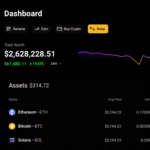Taylor Swift’s reign as a global music powerhouse didn’t happen by accident. Beyond her songwriting genius and passionate fanbase lies a sophisticated system of algorithms, predictive modeling, and consumer insights—powered by big data analytics. In 2024, Taylor Swift and platforms like Spotify are redefining the music economy by leveraging AI in the music industry and integrating data science in entertainment. This seamless mix of talent and tech is transforming how royalties are calculated, how fans are engaged, and how concerts are planned.
In this article, we’ll explore how big data analytics is the silent engine behind Taylor Swift’s music empire, and how Spotify uses AI to shape listening habits, boost artist revenue, and predict tour successes.
The Data Behind the Hits: Swift’s Strategic Partnership with Spotify
For years, Taylor Swift was critical of streaming platforms. But her re-embrace of Spotify in recent years isn’t just about visibility—it’s strategic. Spotify’s data ecosystem offers access to:
- Listener demographics and behavior
- Real-time stream counts by region
- Skip rates and repeat plays
- Playlist algorithm inclusion metrics
These insights, part of the big data analytics revolution, enable Swift and her team to tailor releases, target marketing campaigns, and even test potential singles before album drops. Every stream, like, and skip becomes a data point that contributes to broader strategies.
What is Big Data Analytics in the Music Industry?
Big data analytics in music refers to the process of examining vast sets of listener, industry, and social media data to uncover patterns, correlations, and insights. It helps artists and platforms make data-driven decisions.
For Taylor Swift, it means:
- Understanding which lyrics resonate most
- Identifying geographic fan concentrations
- Forecasting ticket sales for potential tour stops
- Customizing merchandise based on fan preferences
The use of AI in the music industry has made this real-time decision-making more accurate and impactful than ever before.
How Spotify’s AI Rewrites the Rules of Music Discovery
Spotify’s recommendation engine is powered by a blend of machine learning and neural networks. This is where AI in the music industry becomes a game-changer.
Spotify’s AI Does the Following:
- Analyzes user listening behavior
- Maps song features like tempo, key, and lyrical sentiment
- Creates dynamic, personalized playlists
For Taylor Swift, this means her new tracks can be served to likely listeners—even if they’ve never searched for her name—based on musical style alone. AI tools identify trends before they go viral, making strategic release planning more precise.
Fan Behavior: Understanding the Swiftie Phenomenon with Data
Few artists boast a more dedicated fanbase than Taylor Swift. But understanding Swifties isn’t just about vibes and aesthetic—it’s about data. Platforms like Spotify, TikTok, and YouTube harvest billions of data points on how, when, and where fans engage.
Big data analytics helps her team:
- Identify fan retention patterns
- Predict virality on TikTok and Reels
- Forecast fan travel behavior for tours
Case Study: The Eras Tour
Before selecting cities for The Eras Tour, Swift’s team used streaming heatmaps to predict concert demand. Cities with high stream counts, merchandise sales, and social engagement were prioritized. This is a prime example of data science in entertainment driving business strategy.
Royalties and Revenue: How AI Helps Artists Get Paid
Music royalties are no longer just based on CD sales or airplay. Today, AI tracks every second of a stream to fairly allocate royalties. Spotify’s data-driven royalty system uses big data analytics to:
- Monitor legitimate streams
- Detect fraudulent plays (bots)
- Ensure accurate payouts
For Swift, whose catalog spans multiple eras and remasters, this ensures each version—whether original or Taylor’s Version—is compensated correctly.
AI in the music industry guarantees artists like her receive granular, track-by-track revenue reports, optimizing their earning potential.
Data Science in Entertainment: Beyond Streaming
Swift’s team applies data science in entertainment far beyond Spotify. For instance:
- Netflix viewing data helped promote her documentary “Miss Americana”
- YouTube Analytics shaped the release timing of her short film “All Too Well”
- Social media sentiment analysis determined how fans would react to different tour announcements
Big data analytics extends into merchandise as well. Swift’s merch drops are tailored based on:
- Age group preferences (Gen Z prefers hoodies; Millennials love vinyl)
- Geographical trends (pastel themes are hot in Asia, while darker aesthetics trend in the U.S.)
- Shopping behaviors (cart abandonment rates, conversion tracking)
The Swift Algorithm: A Predictive Model for Stardom
Taylor Swift is more than an artist—she’s an algorithm. Every decision is shaped by data:
- Album release timings based on streaming activity
- Tracklist order optimized for attention spans
- Lyrics designed around fan keyword trends
These strategies are honed using big data analytics, allowing her team to pre-visualize outcomes and pivot before problems arise. Her marketing campaigns are A/B tested, her setlists analyzed by heat maps of crowd engagement, and her announcements timed with algorithmic relevance.
How YouTube, TikTok, and Twitter Feed the Data Engine
Every time a Swiftie posts a TikTok dance, the algorithm listens. Every retweet, like, and mention on X (formerly Twitter) becomes a behavioral data point.
AI in the music industry scrapes this metadata to:
- Detect mood shifts
- Identify emerging fan lingo
- Measure campaign success in real-time
Platforms integrate these findings into Swift’s promotional rollout. When fans created their own “Eras Tour outfits,” Swift’s team used this viral moment to launch a themed merch line within 48 hours—thanks to real-time big data analytics.
Ethical Implications: When Data Knows You Better Than You Do
While the use of big data analytics offers precision, it also raises questions:
- Are we losing artistic spontaneity?
- Do fans become commodities in the data marketplace?
- How much personalization is too much?
Taylor Swift’s team appears aware of these issues, often using data for direction but not domination. Her surprise drops and “Easter eggs” are meant to delight fans without feeling calculated.
Still, the balance between art and algorithm is delicate, and data science in entertainment will continue to walk this tightrope.
Lessons for Aspiring Artists and Music Tech Entrepreneurs
You don’t need Taylor Swift’s budget to harness these tools. Today’s platforms offer data-driven insights even for indie musicians:
- Spotify for Artists gives stream data, fan demographics, and playlist performance.
- YouTube Studio tracks engagement metrics in real time.
- TikTok Creator Tools help identify trends and viral potential.
Meanwhile, tools like Soundcharts and Chartmetric provide insights into audience growth, playlist additions, and media coverage—democratizing big data analytics for rising stars.
Future of Music: A Symphony of Code and Creativity
Looking ahead, AI in the music industry is set to evolve:
- Predictive algorithms will help write chord progressions
- Virtual concerts will be scheduled via fan behavior forecasts
- Dynamic album art and lyrics may change in real time based on listener moods
Artists like Taylor Swift are just the beginning. With data science in entertainment becoming the norm, future stars will build careers not just on talent—but on terabytes.
Conclusion: Taylor Swift’s Data-Driven Legacy
Taylor Swift’s musical journey is now a tech case study in how to fuse art with analytics. Her strategic use of big data analytics, from Spotify streams to TikTok trends, shows that understanding your audience means listening to both emotion and data.
Through the smart application of AI in the music industry and the broader scope of data science in entertainment, Swift has proven that numbers and notes can work together harmoniously.
In the end, Taylor Swift doesn’t just sing to the world—she listens to it, too. And thanks to the data, she knows exactly what it wants to hear. Also check AI for Data Analysis.





